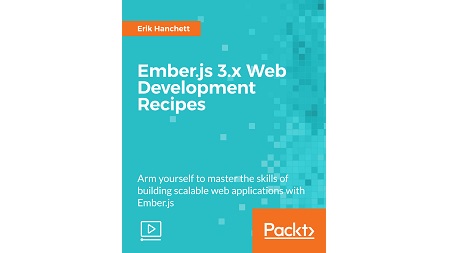
English | MP4 | AVC 1920×1080 | AAC 48KHz 2ch | 2h 28m | 1.25 GB
Arm yourself to master the skills of building scalable web applications with Ember.js
Ember.js is an open source JavaScript framework that will make you more productive. It uses common idioms and practices, making it simple to create amazing single-page applications. It also lets you create code in a modular way using the latest JavaScript features. Not only that, it has a great set of APIs to get any task done.
This course provides in-depth explanations on how to use the Ember.js framework to take you from beginner to expert. You’ll start with some basic topics and, by the end of the course, you’ll know everything you need to know to build a fully operational Ember application.
We’ll begin by explaining key points on how to use the Ember.js framework and its associated tools. You’ll learn how to effectively use Ember CLI and how to create and deploy your applications. We’ll take a close look at Ember templates by examining bindings and observers. We’ll then move on to Ember components, models, and Ember Data. We’ll show you examples on how to connect to RESTful databases. Next, you’ll get to grips with testing via integration and acceptance tests using QUnit. We will conclude by covering authentication, services, and Ember add-ons.
Each video will make it that much easier to understand Ember.js. Video after video, you will learn Ember.js concepts by following simple step-by-step processes.
What You Will Learn
- Create a component with actions and events
- Set up a model with Ember Data using fixture data
- Create several different types of test case and run them
- Manage and set up user authentication using Ember Simple Auth
- Add animated transitions to your app with Liquid Fire
- Set up a service and initializer with dependency injection
- Create a working chat application
Table of Contents
Ember CLI Basics
1 The Course Overview
2 Installing Ember CLI
3 Creating Our First Project
4 Asset Compilation
5 Dependency Management, Upgrading the Project, and Deployment
Ember Templates
6 Defining an Application Template
7 Working with Conditionals in Templates
8 Displaying a List of Items
9 Binding with Element Attributes and Classes
10 Working with HTML Links inside Templates
11 Handling HTML Actions
12 Using Template Input Helpers
Ember Router
13 Defining an Application Route
14 Setting Up a Router
15 Using Redirection with Routes
16 Working with Asynchronous Routing
17 Loading and Error Handling
18 Using Query Parameters
Ember Controllers
19 Storing Application Properties
20 Handling Actions in Controllers
21 Working with Transitions
22 Managing Dependencies between Controllers
Ember Components
23 Using Components in an Application
24 Using Events in Components
25 Implementing Actions in Components
26 Passing Properties to a Component
27 Using Yield with Components
Ember Models and Ember Data
28 Using Fixtures
29 Customizing the Adapter and Serializer
30 Working with Relationships
Logging, Debugging, and Testing
31 Using Ember.Logger
32 Using Acceptance Testing and Unit Tests
33 Testing Routes, Models and Controllers
Awesome Tasks with Ember
34 Using Ember Validations
35 Using D3.js with Ember.js
36 Using Ember with Sockets
Resolve the captcha to access the links!